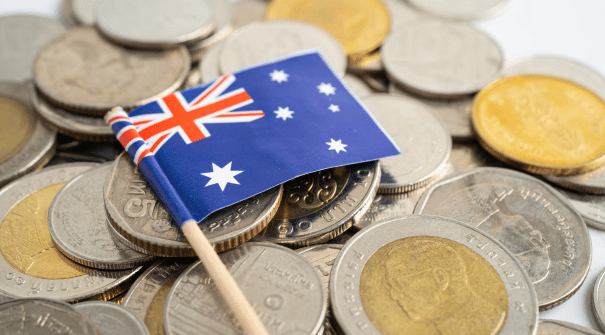Today, we briefly review our exposure to the majors banks and update our take on the group.
Australia’s banking sector has proven to be resilient over bumpy 2024. The Big Four — Commonwealth Bank of Australia (CBA), National Australia Bank (NAB), ANZ Group Holdings (ANZ), and Westpac Banking Corporation (WBC) — delivered stellar performances in 2024, with total returns significantly outperforming the broader market (ASX200: +7.5%). Westpac led with a price gain of 40%, followed by CBA at 34.9%, NAB at 20.2%, and ANZ at 9.8%. These results reflect the sector’s ability to generate strong shareholder returns, even amidst a challenging macroeconomic environment.
The resilience of these banks lies in their ability to balance stable asset quality and earnings performance, despite sector-wide pressures on net interest margins (NIMs) and intensifying competition. Westpac, for example, managed its margins effectively while achieving loan and deposit growth in line with the system, a testament to its operational excellence. ANZ,
As the Reserve Bank of Australia (RBA) navigates its monetary policy, the prospect of interest rate cuts in 2025 could serve as a catalyst for sustained growth in the banking sector. Potential rate cuts would alleviate pressures on household and business finances, potentially reducing the risk of loan defaults and stabilizing asset quality. High property prices and robust mortgage portfolios further mitigate concerns over rising arrears, ensuring that non-performing loans (NPLs) remain manageable.
Investors should take note of the ‘high’ valuations currently assigned to bank stocks, but this is also a reflection of the market’s confidence in their stability and earnings potential. NAB, trading at a forward price-to-earnings (P/E) ratio of 17.0x and a dividend yield of 4.4%, continues to demonstrate strong technical momentum (more on this later) and growth potential. ANZ, with a forward dividend yield of 5.6% and P/E of 12.9x, represents an attractive option for income-focused investors, particularly as concerns around its integration activities appear to be overblown. Meanwhile, Westpac, with a forward P/E of 16.3x and a 4.9% dividend yield, has earned its “Buy” rating being the most compelling among its peers (and price action reflects this).
Economic growth in Australia is expected to improve gradually in 2025, with modest gains in household income and stabilizing property prices supporting the sector’s outlook. Although challenges such as elevated inflation and cautious consumer spending persist, the banks are well-positioned to navigate these headwinds. Their robust provisioning buffers, dynamic risk assessment tools, and proactive loan portfolio management ensure they are equipped to manage risks effectively.
Looking ahead, the Big Four banks are poised to benefit from ongoing inflows of capital, particularly from superannuation funds and retail investors, who continue to value their predictable and stable returns. While some analysts caution against high valuations, the sector’s long-term fundamentals remain strong, making it an appealing choice for investors seeking stability and reliable dividends in an uncertain global environment.
That said, we turn to the technical analysis of our Big Four (in our case, Three) exposures starting with NAB (ASX.NAB). Last time we provided a technical update on NAB in November, we said, “Despite the absence of rate cuts from the RBA, NAB has extended higher to hit near record levels at $40. The breakout and exit from a 15-year bear market is the defining technical pattern on the quarterly chart below. Scope is raised for further upside and a probable entry into new record territory in the year ahead.
NAB has forged ahead since the breakout and exit from a multiyear bear market. NAB is now close to retesting the 2008 record highs. Ultimately, we expect NAB to break through topside resistance and make new record highs.
Meanwhile, on WBC we said “Since breaking out above the primary downtrend and existing a multiyear bear market, Westpac has surged nearly 30% this year. This caught many brokers and investment banks off guard given valuations of Australian banks are amongst the highest in the world, and the economy has not been firing all cylinders. Following a recent consolidation, upward momentum should soon return to Westpac, with the ten-year highs near $36 within reach over the coming year.”
Westpac has a similar setup to NAB. The shares have surged towards the next major resistance level at $42. We expect a retest of this key resistance level, and inevitably a break through to new record highs.
Finally, regarding ANZ, we noted “Since breaking out above the primary downtrend on the 10-year monthly chart, ANZ has extended higher. The technical setup continues to screen bullish for ANZ, which follows a similar pattern to that of the other major banks. While the near term risks more consolidation, the scope is raised for upside extension towards the next important resistance level at $32 over the coming year.”
Similar to WBC and NAB, ANZ has forged ahead to retest the $32 resistance level. We anticipate upward momentum to soon resume and for ANZ to retest the record highs above $36 in the year ahead.

In conclusion, the Australian banking sector offers significant investment potential, particularly through exposure to NAB, ANZ, and Westpac. These banks combine operational resilience with strong capital management, positioning them for continued success even as the economic environment evolves. For investors seeking both growth and income, the Big Four (again, in our case Three) banks remain a core position in the Fat Prophets portfolio.
We’re confident enough to adjust our ratings on ANZ and NAB back to a BUY. Our rating on WBC remains unchanged as a BUY.
Disclosure: Fat Prophets and its affiliates, officers, directors, and employees may hold an interest in the securities or other financial products relating to any company or issuer discussed in this report. Fat Prophet’s disclosure of interest related to Investment Recommendations can be provided upon request to members@fatprophets.com.au.
Chart Source: Thomson Reuters








